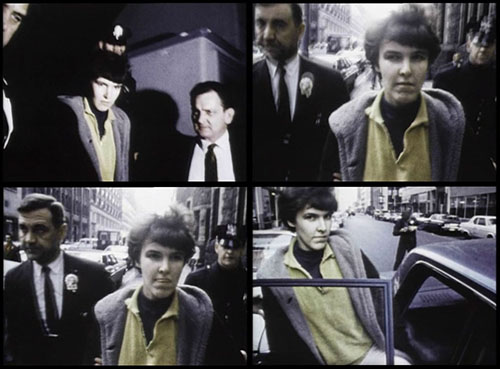At the Verso blog, Avital Ronell writes about Valerie Solanas and her SCUM Manifesto, highlighting the fraught social context that shaped the startling text and its author. Ronell’s piece is excerpted from the introduction to a new paperback edition of SCUM Manifesto, out from Verso now:
In 1968 Jacques Derrida brought out his pathbreaking essay, “The Ends of Man,” and Valerie Solanas began earnestly distributing [self-published] SCUM Manifesto. In June of that year she gunned down Andy Warhol as he was speaking on the telephone. These events may seem miles apart on the cultural shock charts, yet they are linked in ways that urge us to reflect on their ineluctable contiguities. Both Derrida and Solanas are interested in the aims and finality of the concept “man.” Admittedly, that may be where their improbable rendezvous ends, some here on an existential corner of 1968, situated among the assassinations of Martin Luther King, Jr., Fred Hampton, and Bobby Kennedy, at the moment they shared the beat of a feverishly agitated Zeitgeist. This was the moment in any case when “man,” getting a political pounding, was up against the philosophical wall and steadily losing ground. Derrida, conceptually fitted for the job, was concerned with the excess of man, which Solanas, we could say, enacted. Where he exposed the Greek ideal of anthropos, she went for the jugular of referential man, busting through layers of philosophical history to put out her own “ends of man,” her own limit case of the classical unity of man.
More than anything else, Valerie Solanas wanted to be a writer. When she couldn’t distribute her work, she went after metonymies of her declared targets. But now I am shooting off too rapidly. Let us back down in order to get a sense of Valerie Solanas and the nonplace that she rigorously occupies. Barely representable or representative, she was a speck and spectre on the margins of extremist writing. Her texts were loaded with irony yet pointed at the real. Confined to the precincts of parasitical utterance, she adopted the language of a pest, plugging the kind of speech that counters while resembling hate speech. Strangely, she was meant to ride the dark side of a foreclosive wave, opening up a field of startling intensities by saying the unspeakable and then vanishing with the near notarization of what she had dared to say. She was on the verge of instituting her sexual hermeneutics, at least in terms of language games. But Solanas was not about to acknowledge her part or participation in any male-driven language game. Perhaps it would be helpful to allow that she had positioned herself on the other side of hate speech. When launching a verbal assault she struck where no terror had been located. Or, the terror against which she set up her linguistic shop had not been heeded, addressed. Not even recognized: “Most philosophers, not quite so cowardly [as most men], face the fact that male lacks exist in men, but still can’t face the fact that they exist in men only. So they label the male condition the Human Condition; pose their nothingness problem, which horrifies them, as a philosophical dilemma”.
Images: Valerie Solanas after her shooting of Andy Warhol. Via Verso blog.
